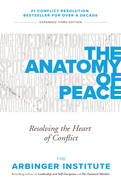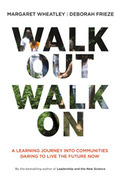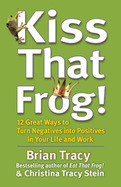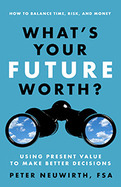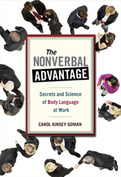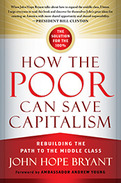2020
In this day and age, perhaps there is nothing more important than knowing how to heal relationships that are breaking and how to maintain connections when people are pulling apart. So many of our conflicts seem unsolvable, but what if conflicts at home, at work, and in the world stem from the same root cause? What if we systematically misunderstand that cause? And what if, as a result, we unwittingly perpetuate the very problems we think we are trying to solve?
This book unfolds as a story. Yusuf al-Falah, an Arab, and Avi Rozen, a Jew, each lost his father at the hands of each other's cousins. The Anatomy of Peace is the story of how they come together, how they help their warring parents and children come together, and how we too can find our way out of the personal, professional, and global conflicts that weigh us down. This expanded third edition includes diagrams and discussions that further explain some of the book's approaches, current research about key ideas, and how the transformation approach in the book relates to Arbinger's comprehensive organizational mindset-change process.
2011
2012
Tracy and Stein present a step-by-step plan that addresses the root causes of negativity, helps you uncover blocks that have become mental obstacles, and shows how you can transform them into stepping-stones to achieve your fullest potential. The book distills, in an accessible and immediately useful form, what Tracy has presented in more than 5,000 talks and seminars with more than five million people in fifty-eight countries and what Stein has learned through thousands of hours of counseling people from all walks of life.
“There is nothing either good or bad, but thinking makes it so,” the authors quote Shakespeare. The many powerful techniques and exercises in this book will help you change your mindset so that you discover something worthwhile in every person and experience, however difficult and challenging they might seem at first. You'll learn how to develop unshakable self-confidence, become your best self, and begin living an extraordinary life.
Neuwirth offers an accessible, step-by-step guide to using the powerful concept of Present Value—which allows you to determine the value today of something that might happen in the future—to evaluate all of the outcomes that might arise from choosing one path as opposed to another. Using examples that anyone can relate to, Neuwirth walks you through the process. Your old refrigerator doesn't work as well as it used to—should you buy a new one right away or muddle through for a while? You're offered a great discount on a service you don't need at the moment but eventually will—buy the service now or wait?
With just a little math and some common sense, you can compare future costs and benefits with present costs and benefits and make “apples to apples” comparisons. This book will be indispensable for anyone who has ever had to figure out whether to stick with an awful job or follow his or her bliss, fix that old car or buy a new one, increase 401(k) contributions or keep the same take-home pay, and a thousand other decisions.
Carol Kinsey Goman combines the latest research and her twenty-five years of practical experience as a consultant, coach, and therapist in this fun and practical guide to understanding what you and the people you work with are saying without speaking. Cartoons, photos, entertaining anecdotes, and dozens of simple and enlightening exercises help readers gain control of the messages their bodies are sending so they can project a more accurate and compelling picture of who they really are to their colleagues, clients, and partners.
"When John Hope Bryant talks about how to expand the middle class, I listen. I urge everyone to read this book and discover for themselves John's great ideas for creating an America with more shared opportunity and shared responsibility."
-- President Bill Clinton
Business and political leaders are ignoring the one force that could truly re-energize the stalled American economy: the poor. Instead of spending millions pursuing "emerging markets" in far-flung, corrupt, and even dangerous countries, companies can find enormous untapped potential right under their noses. If we give poor communities the right tools, policies, and inspiration, they will be able to lift themselves up into the middle class and become a new generation of customers and entrepreneurs.
John Hope Bryant knows this firsthand. Raised in poverty-stricken, gang-infested South Central Los Angeles, he became a successful businessman and founded Operation HOPE, a nonprofit that promotes "silver rights"-financial dignity and empowerment-for millions.
The poor are not stupid or lazy, Bryant writes, they've simply been abandoned. Business loans, home loans, and financial investments have vanished from their communities. After decades of deprivation they lack bank accounts, decent credit scores, and any real firsthand experience of how a healthy free enterprise system functions. The young have no role models for success other than athletes, entertainers, and, sadly, criminals.
Bryant exposes the historical roots of this unfortunate situation, explains why the solutions tried so far have proved insufficient, and offers a way forward. He lays out what he calls a Marshall Plan for our times, a series of straightforward, actionable steps to build financial literacy and expand opportunity so that the poor can join the middle class.
Fully 70 percent of the American economy is driven by consumer spending, but more and more people have too much month at the end of their money. John Hope Bryant aspires to "expand the philosophy of free enterprise to include all of God's children" and create a thriving economy that works not just for the 1 percent or even the 99 percent but for the 100 percent.


